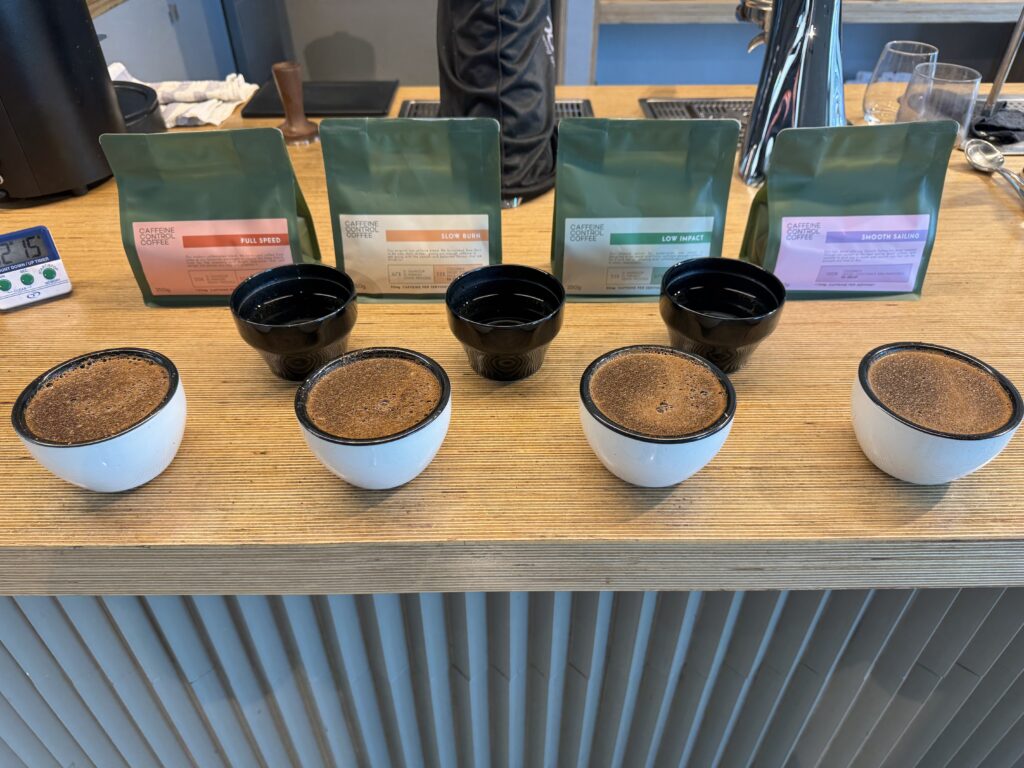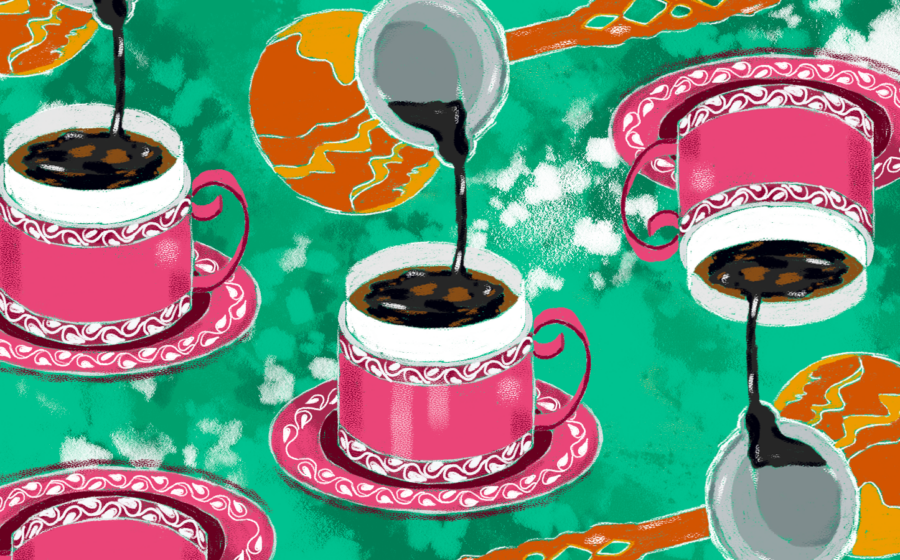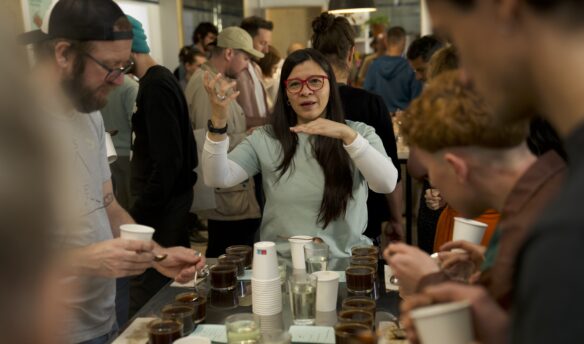For the 2013 World Barista Champion Pete Licata, consuming coffee at all hours of the day was just part of the job—that is, until years of excessive caffeine consumption began to take a toll. Licata found himself lying awake at night, unable to sleep, despite chronic feelings of exhaustion during the day. A conversation with a friend motivated him to find answers.
“She called it adrenal fatigue. I knew I wasn’t sleeping well,” says Licata.
After meeting with his primary care physician, Licata changed his diet, started exercising more, and took a break from alcohol. Still, he felt mostly the same.
“It was kind of trial-and-error. [I thought] maybe it’s the coffee,” he says. “I started to cut back and it made a big difference. That was a lightbulb moment.”
Caffeine is a stimulant that acts as an adenosine blocker, which can result in a feeling of wakefulness. Some studies associate caffeine consumption with increased athletic performance, but excessive amounts can lead to anxiety, insomnia, and heart palpitations.
“Four hundred milligrams is the most caffeine healthy adults are recommended to have,” says Licata. “Four hundred milligrams isn’t that much. If you have a pour-over with a 20g dose, that’s 250mg already. You’re more than halfway there. I think most people drink more caffeine than they think they do.”
The connection between caffeine and health issues like anxiety has led a growing number of consumers to switch to decaf, or quit coffee altogether. Coffee consumption is particularly low among members of Gen Z, who drink less than half the coffee Millennials do, according to one recent study. Decaffeinated coffee continues to expand as a category, with some projections predicting more than 5% growth over the next five years.

Licata knew he needed to shift his personal consumption, but was reluctant to change his daily routines.
“I found this deeply rooted ritual—I really want a coffee in the afternoon. I don’t want a tea or a milkshake. A decaf will fill that need, but sometimes you want a bit more than a decaf,” he says.
Unsatisfied with existing solutions in the market, Licata and his wife, Maria Licata, founded Caffeine Control Coffee. The Melbourne, Australia-based roastery offers an array of blends with different levels of caffeine, ranging from the fully caffeinated Full Speed to the fully decaffeinated Smooth Sailing. The approximate caffeine content for each blend is listed clearly on the front label.
Unlike the “half-caf” shots many baristas haphazardly blend on demand for customers, Caffeine Control’s blend components are chosen not only for their caffeine levels but also their flavor profiles.
“You have to roast individual components to match solubility and match the flavors you want to get out of them,” says Licata.
In the case of Slow Burn, 67% of the blend is comprised of a fully caffeinated coffee from Finca El Paraíso in El Salvador, while 33% is an ethyl acetate decaf from Colombian coffee producer Diego Lopez’s Finca San Francisco. The blend clocks in at approximately 90mg of caffeine per serving. The percentages are flipped for Low Impact, which results in roughly 50mg of caffeine per serving.
Single-Origin Decaf
While most decaffeinated coffees are processed in large factories in non-coffee producing countries, the Licatas only use single-lot coffees for their blends.
“We want to buy something that’s traceable and identifiable, especially from someone we might know,” says Licata. “We’re trying to forge more relationship-style coffees.”
One challenge is that the process of removing caffeine from green coffee has a significant impact on its physical structure. As a result, decaffeinated coffees tend to roast and brew differently.
“Decafs extract differently from regular coffees,” says Licata. “When you have a good decaf, it tends to extract longer. Pour-overs get really slow. But they don’t really over-extract—you don’t get much astringency or dry bitterness.”
There are a variety of techniques used to remove caffeine from coffee, including water process and supercritical carbon dioxide. Caffeine Control primarily uses ethyl acetate decaffeinated coffees from Colombia, due to their traceability, availability, and flavor profiles.
“Ethyl acetate decafs tend to be more full-bodied and have more acidity,” says Licata. “We’re happy with the flavor; the biggest issue is the impression of ethyl acetate.”
Ethyl acetate is a naturally occurring organic compound that is a popular choice for decaffeinating coffee in Colombia. It is a byproduct of processing sugarcane, leading some roasters to call these decafs “sugarcane process.” Coffees processed with this chemical are not eligible for organic certification.
“We’re not going to beat around the bush that it’s ethyl acetate. But something we’re trying to provide some clarity on is what it is and how it is processed in the body,” says Licata. “It gets broken down within minutes of consumption and has virtually no effect on the body. By all regards it’s considered a very safe product.”
The Caffeine Spectrum
Confusion about the safety of decaffeination techniques is just one of the areas in which Licata has found misinformation surrounding caffeine and coffee.

“One of our missions is to provide clarity and ease of understanding for consumers. There is so much bad information out there—it’s hard to discern what’s true,” he says.
Another common myth that Licata encounters is that light-roast coffee contains more caffeine.
“Caffeine doesn’t roast off. It doesn’t even melt until 455° Farenheit,” he says. Licata believes the confusion around caffeine levels has to do with the beans’ transformation during roasting. As coffee is roasted, moisture in the coffee evaporates. As a result, darker roasts are less dense than lighter roasts.
“If you take the same gram weight, you’re going to have more caffeine in the dark roast, because you’re going to have more beans to make that weight. The amount of caffeine, bean to bean, is about the same,” he says.
Whether he’s brewing Full Speed, Smooth Sailing, or something in between, Licata is aiming to dispel such misconceptions, to inspire coffee professionals to think more about their caffeine consumption—and to share that information with customers.
“I think that’s responsible for us as the peddlers of the drug,” he says. Plus, offering consumers more options has additional benefits for coffee companies. “You might be able to sell more cups of coffee.”
















